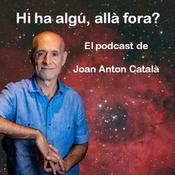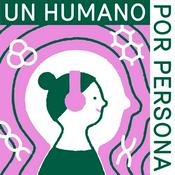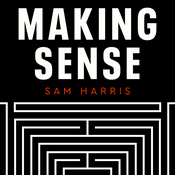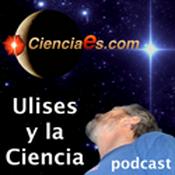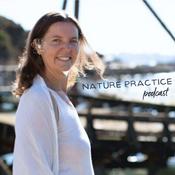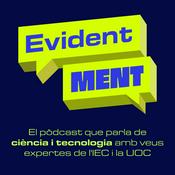311 episodios

The Power of a Collective Pause
18/12/2025 | 21 min
Explore how students are using simple mindful breathing practices to navigate stress, stay grounded, and support their classmates.Summary: Classrooms often are confronted with difficult topics that can leave students overwhelmed and anxious. In this episode of The Science of Happiness, we highlight how college student Evelyn Mata brought calm to herself and peers during an Immigration Studies class through simple collective breathing practices. How to Do Box Breathing: Sit comfortably: Find a quiet spot and focus on your breath, keeping a relaxed posture. Inhale (4 counts): Breathe in slowly through your nose, letting the air fill your belly and chest. Keep the pace steady, not strained for a count of four. Hold (4 counts): Pause gently at the top of the inhale. This isn’t a tense hold, just a moment of stillness to let the body register calm. Hold your breath for four slow counts. Exhale (4 counts): Release the breath through your nose or mouth in a smooth, even flow. Imagine tension leaving the body as the breath moves out for a count of four, emptying your lungs. Hold (4 counts): Let yourself rest briefly in the empty space before the next inhale. This completes the “box.” Repeat: Continue this cycle for several minutes, or for 3-4 rounds, until you feel calmer. Stop sooner if you feel lightheaded; return to natural breathing when you’re done. Scroll down for a transcription of this episode.Today’s Guests: EVELYN MATA is an undergraduate student at UC Berkeley, studying Psychology and Public Policy.DR. PABLO GONZALEZ is a professor in the Ethnic Studies department at UC Berkeley.Learn more about Pablo here: https://ethnicstudies.berkeley.edu/people/pablo-gonzalezRelated The Science of Happiness episodes: Breathe Away Anxiety (Cyclic Sighing): https://tinyurl.com/3u7vsrr5How To Tune Out The Noise: https://tinyurl.com/4hhekjuh What To Do When Stress Takes Over: https://tinyurl.com/mskvfmv4Related Happiness Breaks:Make Uncertainty Part of the Process: https://tinyurl.com/234u5ds7A Meditation for When You Feel Uneasy: https://tinyurl.com/4x27ut3pA Mindful Breath Meditation, With Dacher Keltner: https://tinyurl.com/mr9d22krTell us about your experience with this practice. Email us at [email protected] or follow on Instagram @HappinessPod.Help us share The Science of Happiness! Leave us a 5-star review on Apple Podcasts and share this link with someone who might like the show: https://tinyurl.com/2p9h5aapTranscription: https://tinyurl.com/4wz4vbc3

Happiness Break: How Connecting With Ancestors Deepens Belonging
11/12/2025 | 10 min
Through a gentle ancestral meditation, discover how grounding in your roots can open the door to healing, meaning, and a deeper sense of belonging.How To Do This Practice: Settle Into Your Body: Notice whether you’re sitting, standing, or walking, and gently bring your attention to the natural rhythm of your breath. Ground Yourself Through the Earth: Feel the weight of your body supported by the ground beneath you, and let any thoughts drift by like passing clouds. Sense the Ancestors in Nature: Expand your awareness to the sky, the earth, trees, and mountains, imagining them as ancestors who have been here long before you. Connect With Your Heartbeat: Place a hand on your heart if it feels comfortable, noticing the steady drumbeat within you—a rhythm shared across generations. Cultivate Compassion for Your Lineage: Envision compassion as a color or texture in your chest and let it gently radiate outward, offering it to your ancestors and to yourself. Offer a Wish for Healing: Bring to mind a simple wish for the easing of suffering—your own or others’—and breathe it through your body from sky to earth before slowly opening your eyes. Scroll down for a transcription of this episode.Today’s Happiness Break Guide: SARÁ KING is a neuroscientist, medical anthropologist and educator at UC San Diego.Learn more about Sará King here: https://www.eomega.org/people/sara-kingRelated Happiness Break episodes:Where Did You Come From: https://tinyurl.com/2y9uyjj6How To Tune Into Water’s Restorative Power: https://tinyurl.com/2k6ybzrsA Meditation to Connect With Your Roots: https://tinyurl.com/ycy9xazcRelated Science of Happiness episodes:Are You Following Your Inner Compass: https://tinyurl.com/y2bh8vvjHow Water Heals: https://tinyurl.com/utuhrnh3Who’s Always There for You: https://tinyurl.com/yt3ejj6wWe want to hear from you! Take our quick 5-minute survey to tell us what you love, what you want more of, and how we can make the show even more inspiring and useful. Everyone who completes the survey can enter a drawing to win a copy of The Science of Happiness Workbook: 10 Practices for a Meaningful Life. Click the survey link in the show notes wherever you’re listening, or go directly to: https://tinyurl.com/happyhappysurvey. Thank you for helping us make the podcast even better!Follow us on Instagram: @ScienceOfHappinessPodWe’d love to hear about your experience with this practice! Share your thoughts at [email protected] or use the hashtag #happinesspod.Find us on Apple Podcasts: https://tinyurl.com/2p9h5aapHelp us share Happiness Break! Leave a 5-star review and share this link: https://tinyurl.com/2p9h5aapTranscription: https://tinyurl.com/mrsnwvrm

How to Feel Better About Yourself
04/12/2025 | 19 min
Self-compassion reduces our feelings of shame and self-doubt. We explore a practice to help quiet our inner critic with kindness.Summary: What does your inner critic sound like? Many of us carry echoes of past misunderstandings, pressures, or expectations. Voices that show up as shame, self-judgment, or the belief that we’re not doing enough. This episode explores a self-compassionate writing practice that helps interrupt those patterns by noticing how we talk to ourselves and learning to respond with more kindness. How To Do This Practice: Choose something you feel ashamed about or critical of: Pick a moment or pattern that brings up self-blame, embarrassment, or disappointment. It doesn’t need to be huge, just something that regularly activates your inner critic. Describe the situation honestly and without judgment: Write down what happened and how it made you feel. Let the tone be neutral, like you’re simply acknowledging what’s true. No harsh labels, no minimizing. Imagine someone who loves you speaking to you: This could be a close friend, mentor, future self, or the voice you’d naturally use when comforting someone you care about. Let that tone guide the rest of the letter. Write to yourself with compassion, acceptance, and understanding: Recognize the difficulty, normalize the feelings, offer reassurance and warmth, acknowledge your strengths and intentions. Treat yourself the way you’d treat someone who came to you hurting. Reframe your struggle in a kinder, more accurate way: Gently question the harsh story you usually tell yourself. Identify what was actually happening beneath the shame— survival instincts, past patterns, symptoms, fear, or overwhelm. Offer yourself a more truthful, generous narrative. Set the letter aside then come back and read it: After a little time (an hour or a day), return to what you wrote. Notice how it feels to receive your own compassion. Let the warmth land. Over time, rereading and rewriting letters like this can shift your inner voice toward kindness and authenticity. Scroll down for a transcription of this episode.Today’s Guests: RENÉ BROOKS is the creator of the blog Black Girl, Lost Keys. She draws on her personal experiences to coach and assist adults with ADHD.Visit René’s Blog: https://blackgirllostkeys.com/SERENA CHEN is the Chair of the Psychology department at UC Berkeley. Her research is focused on self-compassion, wellbeing, and social interaction.Learn more about Serena and her work: https://tinyurl.com/mry3vx3vRelated The Science of Happiness episodes: Why Compassion Requires Vulnerability: https://tinyurl.com/yxw4uhpfRelated Happiness Breaks:Fierce Self-Compassion Break: https://tinyurl.com/yk9yzh9uTell us about your experience with this practice. Email us at [email protected] or follow on Instagram @HappinessPod.Help us share The Science of Happiness! Leave us a 5-star review on Apple Podcasts and share this link with someone who might like the show: https://tinyurl.com/2p9h5aapTranscription: https://tinyurl.com/et2spbbp

Happiness Break: A Meditation for When Gratitude Feels Hard
27/11/2025 | 5 min
When gratitude feels distant, gently notice what’s here now— creating space for both heaviness and small moments of appreciation.How To Do This Practice: Get Comfortable: Sit upright or lie down. Whatever feels most supportive. Then soften your gaze or close your eyes. Take Three Slow Breaths: Let your body begin to settle. Feel the tension release a little more with each exhale. Notice How You’re Feeling: Without changing anything, simply acknowledge what’s present—tiredness, frustration, numbness, ease—whatever it is. Make Space for What’s Hard: Recognize that the world can feel heavy. It’s okay to hold grief, anger, or stress. You don't have to push it away. Gently Notice the Present Moment: Shift your attention to something neutral: your breath, your feet on the floor, the air on your skin. Just observe. Look for One Small Thing to Appreciate: Ask: Is there anything, however small, I can be thankful for right now? A warm cup of coffee, a slower breath, the fact that you showed up. Today’s Happiness Break Guide:DACHER KELTNER is the host of The Science of Happiness podcast and is a co-instructor of the Greater Good Science Center’s popular online course of the same name. He’s also a professor of psychology at the University of California, Berkeley.Related Happiness Break episodes:A Meditation on Original Love: https://tinyurl.com/5u298cv4Loving Kindness Meditation: https://tinyurl.com/2kr4fjz5Who Takes Care of You: https://tinyurl.com/5xmfkf73Related Science of Happiness episodes:Nine Steps to Forgiveness: https://tinyurl.com/vb7kk5kyHow to Show Up For Yourself: https://tinyurl.com/56ktb9xcWho’s Always There for You: https://tinyurl.com/yt3ejj6wWe want to hear from you! Take our quick 5-minute survey to tell us what you love, what you want more of, and how we can make the show even more inspiring and useful. Everyone who completes the survey can enter a drawing to win a copy of The Science of Happiness Workbook: 10 Practices for a Meaningful Life. Click the survey link in the show notes wherever you’re listening, or go directly to: https://tinyurl.com/happyhappysurvey. Thank you for helping us make the podcast even better!Follow us on Instagram: @ScienceOfHappinessPodWe’d love to hear about your experience with this practice! Share your thoughts at [email protected] or use the hashtag #happinesspod.Find us on Apple Podcasts: https://tinyurl.com/2p9h5aapHelp us share Happiness Break! Leave a 5-star review and share this link: https://tinyurl.com/2p9h5aapTranscription: https://tinyurl.com/f6xa56mx

Being Kind Is Good for Your Health
20/11/2025 | 16 min
Doing good for others benefits our own minds and bodies, as well. We explore the science of kindness.Summary: On this episode of The Science of Happiness we explore how everyday acts of kindness strengthen our sense of connection and belonging, and why our brains are built to feel good when we support others. Drawing from both research and lived experience, we examine how even small gestures can reduce anxiety, increase purpose, and ripple outward through our communities. We also look at why kindness flourishes when it’s spontaneous and genuine, and how practicing it can open us to deeper presence, vulnerability, and joy.How To Do This Practice: Set an intention: Take a moment each evening to reflect on the day ahead and choose a general theme for how you want to show kindness. Like offering gratitude, being more present, or supporting someone who comes to mind. Keep it flexible: Rather than creating a rigid checklist, identify a few broad “buckets” of kindness so you can let opportunities arise naturally. Notice moments to connect: As you move through your day, look for organic openings to offer warmth. Whether through a sincere compliment, a helpful gesture, or simply slowing down to truly listen. Act on what feels genuine: Choose gestures that feel authentic to you and appropriate to the moment, aiming for sincerity over perfection. Reflect briefly: At the end of the day, jot down the acts you did and how they felt—for you and for others—paying attention to small emotional shifts or moments of connection. Stay gentle with yourself: If you miss a moment or a day feels off, reset without judgment; the practice is about cultivating awareness and kindness, not completing a task list. Scroll down for a transcription of this episode.Today’s Guests: DANA MERWIN is a progressional clown and performer based in San Francisco.Learn about Dana’s Work: https://tinyurl.com/bd6ew95aFollow Dana on Instagram: https://tinyurl.com/dspstzrkDAVID CREGG is a clinical psychologist at South Texas Veterans Health Care System whose research specializes in positive psychology.Find more of David’s work here: https://tinyurl.com/ajay6n6aRelated The Science of Happiness episodes: Why Compassion Requires Vulnerability: https://tinyurl.com/yxw4uhpfThe Contagious Power of Compassion: https://tinyurl.com/3x7w2s5sWho’s Always There For You: https://tinyurl.com/yt3ejj6wRelated Happiness Breaks:Tap into the Joy That Surrounds You: https://tinyurl.com/2pb8ye9xA Meditation for When Others Are Suffering: https://tinyurl.com/2tcp2an9Tell us about your experience with this practice. Email us at [email protected] or follow on Instagram @HappinessPod.Help us share The Science of Happiness! Leave us a 5-star review on Apple Podcasts and share this link with someone who might like the show: https://tinyurl.com/2p9h5aapTranscription: https://tinyurl.com/yx64nk2n
Más podcasts de Ciencias
Podcasts a la moda de Ciencias
Acerca de The Science of Happiness
Escucha The Science of Happiness, Mindfacts: Historia y futuro de la Ciencia y la Tecnología y muchos más podcasts de todo el mundo con la aplicación de radio.es
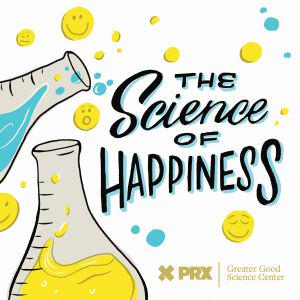
Descarga la app gratuita: radio.es
- Añadir radios y podcasts a favoritos
- Transmisión por Wi-Fi y Bluetooth
- Carplay & Android Auto compatible
- Muchas otras funciones de la app
Descarga la app gratuita: radio.es
- Añadir radios y podcasts a favoritos
- Transmisión por Wi-Fi y Bluetooth
- Carplay & Android Auto compatible
- Muchas otras funciones de la app


The Science of Happiness
Descarga la app,
Escucha.



















